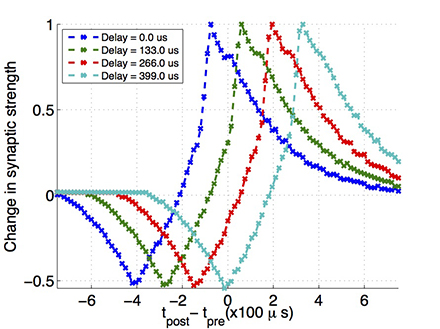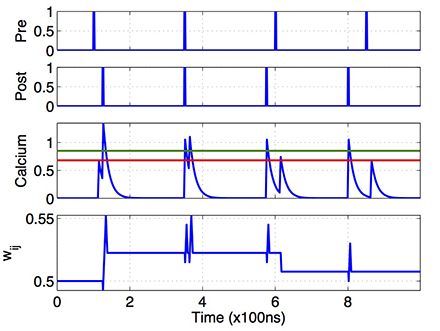Calcium-based plasticity learning model
Different VLSI implementations of analogous learning models have been proposed in the past. However, given their mathematical and silicon implementation complexity, they have limited applications. The most common implementations are Spike Time Dependent Plasticity (STDP) models; however, they do not provide enough repertoire of behaviors useful for investigating the computational properties of large neural networks. Numerous experiments on different brain regions have shown how synaptic efficacy varies with the relative spike timing and firing rate as consequence of calcium concentration and a variety of complex and non-linear STDP rules were also found. Multiple learning models have been proposed for explaining synaptic changes and some have also a corresponding implementation in VLSI circuits. However, hardware models that show how the dynamics of the postsynaptic calcium alone determine the outcome of synaptic plasticity are still uncovered. Recently a “calcium-based plasticity model” that explains a large diversity of spike timing-dependent plasticity by varying the parameters that define the calcium dynamics has been proposed [1]. Hardware implementations of this model have not been explored yet.

In this research project we will investigate biological realistic VLSI implementations of learning mechanisms and their application to pattern recognition. Synaptic modifications will follow a model named “Calcium-based plasticity learning model” and proposed in [1]. This research will lead to the implementation of a novel state-of-the art neuromorphic device with potential application in computational neuroscience basic research investigations. Basic network level performances in the context of pattern recognition will also be demonstrated.

[1] M. Graupner, N. Brunel. “Calcium-based plasticity model explains sensitivity of synaptic changes to spike pattern, rate, and dendritic location”. National Academy of Sciences, vol. 109, issue 10, pp. 3991-3996, 2011.
